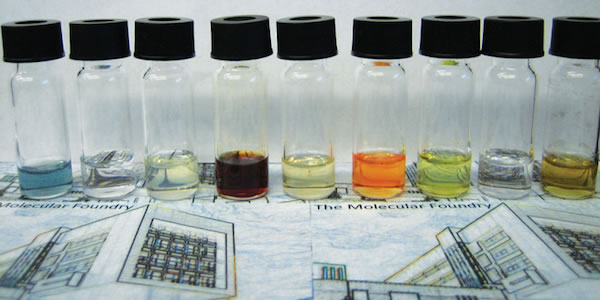Smart Windows For All Seasons
Everything is “smart” nowadays, and our windows getting there, too. Before you ask why windows need intelligent dimensions, ask yourself this: how many times have you wished the room could be brighter, but not hotter? And have you ever found natural lighting to be a little too sharp to your (and your tablet screen’s) liking? And the most profound question: does your love for sunlight change with the seasons? Admit it, it totally does — we embrace it more in the winter than on a mid-summer day. Our windows should be able to “adapt” to our changing mood. And now, thanks to a group of researchers at the University of Texas, Austin, they finally can.
The idea behind smart window technology actually goes beyond our personal preference, tied to a larger grid; that is, by allowing indoor occupants to control shading, the building’s overwhelming power consumption can be significantly reduced. The green aspects of having tunable windows are especially pronounced in places near the equator like, say, Cancun, where summer begins with every sunrise, driving up AC usage like crazy all-year-round.
But, to be fair, smart window technology has been around for a while, and previous endeavors deserve some spotlight.
First-Gen Gigs: Traditional Smart Windows
The fundamental basis behind smart window technology is an electrochromic material that changes color, transparency, and reflectivity properties when an external potential is applied. First generation electrochromic smart windows achieved customizable tinting by sandwiching conductive materials between two slabs of glass; when voltage is applied, an oxidation reaction allows ions to flow from the storage layer to the electrochromic layer to darken it, and when voltage is taken away, the ions discharge to restore transparency.
credit: howstuffworks — the traditional version
Between total transparency and opacity exists in-between tinting effects, which is pretty awesome compared to their counterparts, but that’s about all traditional smart windows can boast about, with the energy-saving potentials still largely unmet. Fact is tint isn’t the only factor that plays a role in heating or cooling a room — the type of sunlight that shines through matters a lot, too; i.e. near-infrared (NIR) light carries more heat than light, and visible spectrum does the opposite.
Thus for smart windows to be able to contribute to a building’s overall energy conservation, they need the ability to absorb different spectrum of light for different applications. And this is where the research group created innovation — they have successfully developed an unprecedented dual-band material that can filter light with frequency differentiation, using dispersion of nanocrystals.
Image source: Milliron Research Group — dispersions of nanocrystals
New Wave: The Power of Two (Bands)
Scientists at the University of Texas, Austin and the University of California, Berkeley have teamed up to produce next-generation smart windows with higher energy efficiency. In a recent paper, the group reveals the secret nanostructure behind their dual-band electrochromic material which allows for high-precision spectrum tuning:
- WO nanocrystals (vacancy-doped tungsten oxide), targeting near-infrared light
- NbO nanocrystals (amorphous niobium oxide), targeting visible light
When annealed together, these nanocrystals form a porous, single-component film with two independent charging mechanisms: intercalated charging for visible bands and capacitive charging for near-infrared bands.
The dual, non-interfering charging mechanism is key to spectrum-based tuning; the WO and NbO nanocrystals are charged when different voltage thresholds are met, which allows near-infrared and visible light to pass through independently. This enables smart windows to not only shift into an unprecedented “cool mode”, giving us the option to have the light without the heat, but also other useful modes as well:
Bright mode (aka winter mode): When 4 volts is applied, both WO and NbO are fully discharged, which results in total transparency for infrared and visible spectrum to pass through, heat and all.
Cool mode (aka summer mode): When 2.3 volts is applied, WO nanocrystals are selectively charged, blocking infrared light and allowing high visible light to transmit through.
Dark mode (aka night mode): When less than 1.8 volts are applied, the NbO nanocrystals are charged, allowing only a tiny part of the visible spectrum to pass through.
Additionally, the group is working on a concept “warm” mode in which visible light is blocked but near-infrared can pass — great for warming up a room without the extra glare.
With high-precision tunability, the new smart windows have an obvious upper-hand in energy-saving applications beyond simple tinting. As lead research Delia Milliron elaborates, “More than half the energy used by buildings goes to either lighting or thermal control (heating and cooling); both of these can be positively impacted by dynamic windows like ours. The energy savings potential depends on region and building type, but in many markets it can be around 10%.”
That 10% savings every cycle can certainly add up, for individual houses, neighborhoods, and public utility networks.
Now here’s a practical question: how would you like your smart window to switch modes?
1. Flickering with delays
– or –
2. Prompt and seamless in the blink of an eye
You don’t have to answer — we get it. It turns out that mesoporous structures created by the nanocrystals can heighten user experience as well. The same group of scientists state in another paper that with ions being in contact with both infrared and visible spectrum at the same time, materials can discharge faster, bringing mode switching time down to just a few seconds.
All in all, consumers can safely expect these smart windows to bring in the following benefits:
- Broad spectral control – so we finally live in our favorite spectrum of light
- Rapid mode switching – for that eye-pleasing, seamlessly-integrated lighting experience straight out of a movie
- Energy savings – to meet our need to stay warm or cool without a ridiculous carbon footprint, or a way-too-many-digits bill
And here’s what the future looks like with all that in place:
While the rest of the video may still be very much conceptual, those sleekly-designed smart windows will likely reach the shelves sooner than we think. Lead UT researcher Delia Milliron disclosed that her company Heliotrope Technologies is at an early manufacturing stage of the new electrochromic windows. When we asked if these dual-band electrochromic windows will be affordable, Ms. Milliron’s response was positive; efficient processing techniques of these nanocrystals will actually make them better priced than ones currently on the market.
“We believe our deliberately crafted nanocrystal-based materials could meet the performance and cost targets needed to progress toward commercialization of smart windows.”
Hopefully the lowered costs will give businesses and homeowners an extra incentive to switch out current windows. Now, if only there was a way to capture and recycle all that absorbed heat to power up the rest of the house…. though for now, having windows that’ll drastically dent our utility bills is plenty to be excited about.
Cited papers:
Spectroelectrochemical Signatures of Capacitive Charging and Ion Insertion in Doped Anatase Titania Nanocrystals
Nanocomposite Architecture for Rapid, Spectrally-Selective Electrochromic Modulation of Solar Transmittance



















